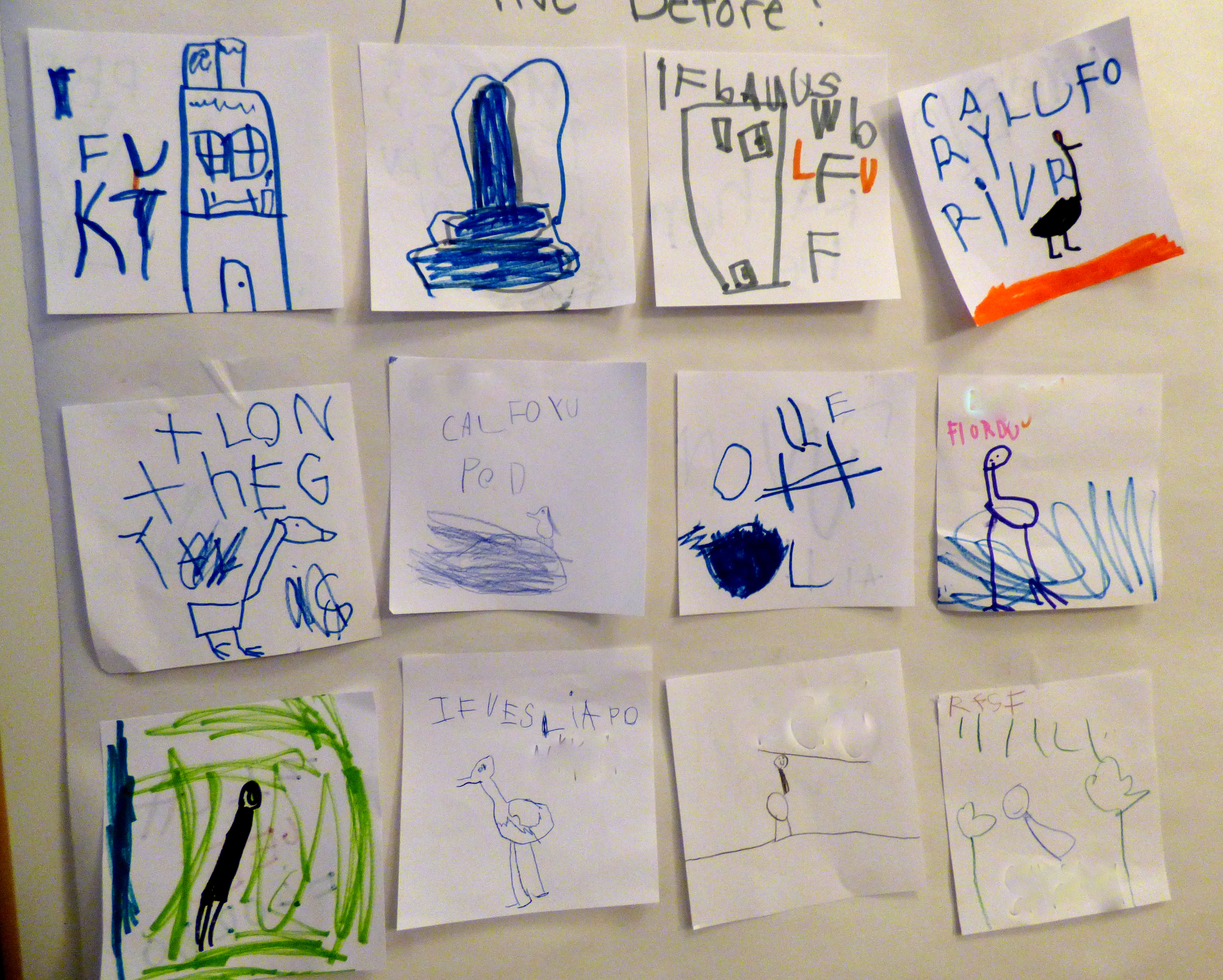Our interest in flying birds has sparked an avalanche of engineering ideas. One student suggested that the best way for us to study the birds would be to build a flying machine. This way we could observe our feathered friends more closely.
Many of the children have begun creating prototypes (their word, not ours).
On another day we asked them what materials they would need for their machines. (We want to make sure we’re prepared!)
“metal, string, more metal, and gas”
“We have to do little wires to make them work.”
“very small metal pieces”
“We need some wire that carries electricity to keep the boosters working.”
“We need a plug as big as this building so we can go far.”
“Or, we need to make a fire on a stick and it attaches to the wire.”
“We can make a seat out of fabric.”
“We need shirts to make a buckle, it buckles in front and in back.”
“June is when the birds come out.”
“We need a parachute and a lighter, in case the boosters go out.”
“And metal cages to catch the bird, with food in it.”
“fabric for the wings”
“We need feathers for the wings.”
“space gears”


